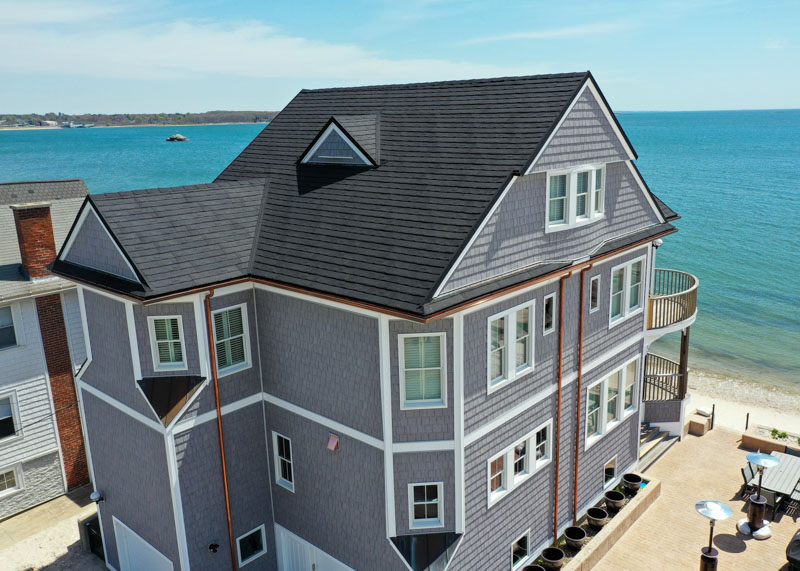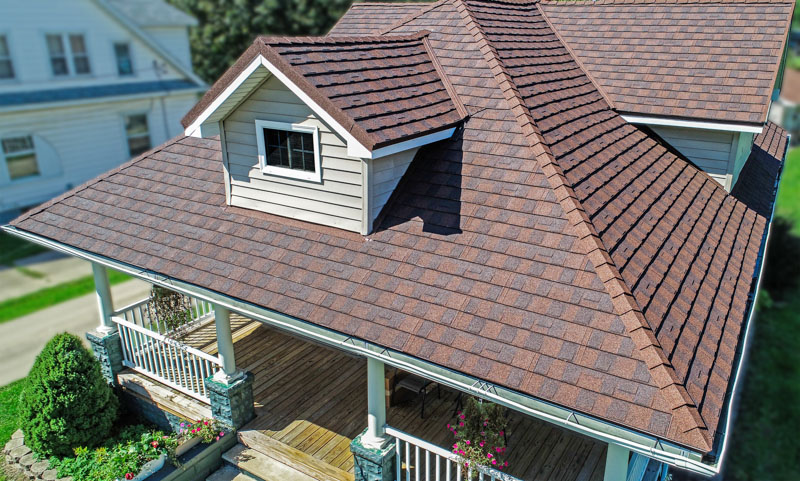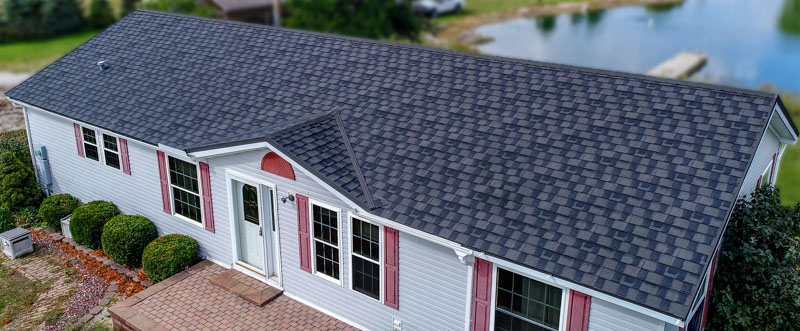Inclement weather is no fun to deal with, especially as a homeowner. Weather-related damage can be a common occurrence and is often costly to fix. In places where harsh conditions are common, your expenses can start to add up quickly if you don’t have a roof that properly protects you and your home. With so many different environmental variables that can come into play, you want a roof that is built to withstand them all. Metal roofing offers the versatility and reliability you need from a roof to protect you from the harshest of conditions.
Metal roofs offer protection from the most damaging types of weather, some of which include:
- Hail
- Heavy rain
- Lightning
- Harsh sunlight
- Humidity
- Strong winds
Depending on where you live and what your biggest weather concerns are, metal roofs can be made specifically to protect your home from its biggest threats. Once installed, roofs are designed to give you long-lasting protection from the elements. The average lifespan of a metal roof lasts upwards of 50 years — that’s two to three times the average lifespan of other roofing options.
In This Article
Are Metal Roofs Best for Hot or Cold Climates?

Metal roofing can withstand the toughest conditions in both the heat and the cold. In warmer climates, protection against harmful UV rays and intense heat is a big concern. Metal roofing makes use of the reflective property of metals to keep your house cool. By preventing sunlight from concentrating on your home, the overall temperatures will be lower. Using a light-colored coating on a metal roof can help to amplify the light reflecting capabilities of the roof. In addition, this type of coating can also help to lower the internal temperature of the home underneath. In areas that also have concerns about fire damage, metal roofs have a Class A fire resistance rating, making them one of the best options available in protection against fire.
For colder climates, water damage can be a major concern, along with the damage that can accompany hailstorms and thunderstorms. Metal roofs provide continuous protection across the entire roof, meaning there are no gaps for water to seep into. Water will run straight off the roof and will not pool because of the slick surface of the metal. Snow and ice will behave the same way — there is no place for them to build up on your roof long-term, preventing ice dams or large collections of snow from forming.
Will a Metal Roof Attract Lighting?
It is a common misconception to believe that metal roofs are more likely to be struck by lightning and behave similarly to a lightning rod. In reality, metal roofing is no more likely to be struck by lightning than any other type of roof. If they are struck, the metal helps to seamlessly transfer the electricity from the shock safely into the ground and away from the home. Due to this, metal roofing is one of the safest options for homeowners who live in areas with frequent thunderstorms and lighting.
Will High Winds Damage a Metal Roof?
High winds can cause a lot of destruction quickly, especially in areas that are susceptible to hurricanes and tornadoes. Metal roofs are substantially less likely to be damaged by wind since they are made up of much fewer individual pieces. The wind that hits the roof will be directed away as there are fewer items for the wind to latch onto. Compare this to shingled roofs where each shingle can easily be blown off by gusting winds and expose your home to damage from the storm. Metal roofs are also more durable against debris picked up by high winds, keeping their shape and ability to protect your house. The continuous design and strength of metal roofing make it one of the only types of roofs that are known to survive severe weather events.
Do Metal Roofs Rust?

Modern metal roofing is designed to withstand the effects of oxidization and rust for the duration of its lifespan. Metal alloys, in combination with protective coatings, are implemented to protect against rust. Special chemical coatings are also used to help protect the base metal from potential rust-causing elements, such as wind and water. Throughout their more than 50-year lifespan, there should only be minimal concerns with rust. You will not have to worry about frequent repairs or any repainting.
How Do Metal Roofs Perform?
In both hot and cold climates, metal roofs provide exceptional protection against severe weather, especially compared to other roofing materials. Shingled roofs, for example, are known to be easily damaged by hail, are susceptible to burning during fires, and can have leakage problems when water infiltrates the gaps between shingles. Metal roofs, however, are much less likely to be damaged both structurally and cosmetically by hail thanks to the durability and strength of the metal. They also are not susceptible to catching fire and are constructed without any natural gaps in coverage on the surface of the roof.
Weigh Your Options

Many homeowners are switching to metal roofs. Making the right decisions about which type of metal to use, what coating is best, and how you should paint a metal roof can be challenging. Taking the time to speak with a metal roofing expert is highly recommended. They can help answer any questions you may have and help you choose what is best specifically for you. They will help you from start to finish and can help you get the most out of a metal roof. You can have peace of mind knowing that your roof will protect you from inclement weather.
